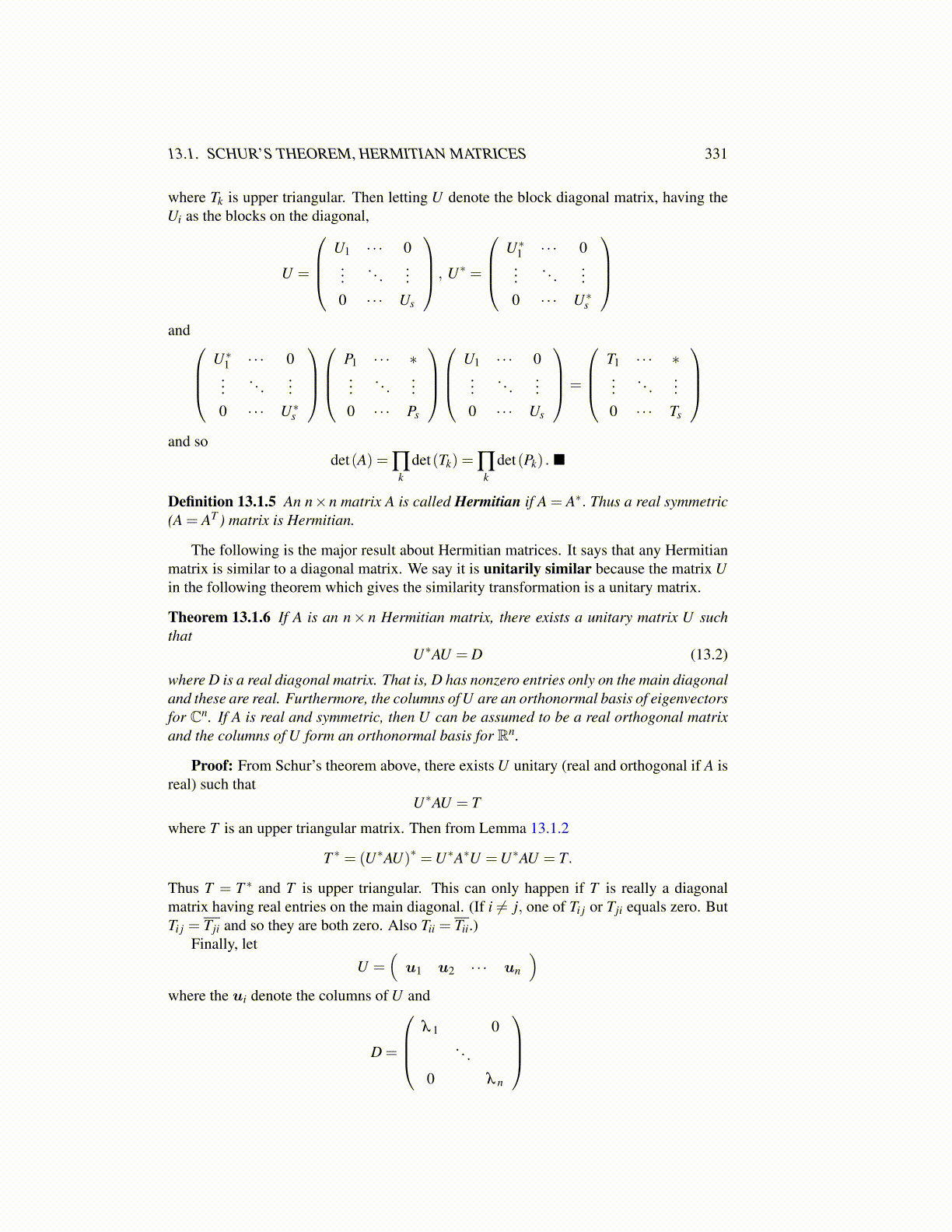
13.1. SCHUR’S THEOREM, HERMITIAN MATRICES 331
where Tk is upper triangular. Then letting U denote the block diagonal matrix, having theUi as the blocks on the diagonal,
U =
U1 · · · 0...
. . ....
0 · · · Us
, U∗ =
U∗1 · · · 0
.... . .
...0 · · · U∗s
and
U∗1 · · · 0...
. . ....
0 · · · U∗s
P1 · · · ∗...
. . ....
0 · · · Ps
U1 · · · 0...
. . ....
0 · · · Us
=
T1 · · · ∗...
. . ....
0 · · · Ts
and so
det(A) = ∏k
det(Tk) = ∏k
det(Pk) . ■
Definition 13.1.5 An n×n matrix A is called Hermitian if A = A∗. Thus a real symmetric(A = AT ) matrix is Hermitian.
The following is the major result about Hermitian matrices. It says that any Hermitianmatrix is similar to a diagonal matrix. We say it is unitarily similar because the matrix Uin the following theorem which gives the similarity transformation is a unitary matrix.
Theorem 13.1.6 If A is an n× n Hermitian matrix, there exists a unitary matrix U suchthat
U∗AU = D (13.2)
where D is a real diagonal matrix. That is, D has nonzero entries only on the main diagonaland these are real. Furthermore, the columns of U are an orthonormal basis of eigenvectorsfor Cn. If A is real and symmetric, then U can be assumed to be a real orthogonal matrixand the columns of U form an orthonormal basis for Rn.
Proof: From Schur’s theorem above, there exists U unitary (real and orthogonal if A isreal) such that
U∗AU = T
where T is an upper triangular matrix. Then from Lemma 13.1.2
T ∗ = (U∗AU)∗ =U∗A∗U =U∗AU = T.
Thus T = T ∗ and T is upper triangular. This can only happen if T is really a diagonalmatrix having real entries on the main diagonal. (If i ̸= j, one of Ti j or Tji equals zero. ButTi j = Tji and so they are both zero. Also Tii = Tii.)
Finally, letU =
(u1 u2 · · · un
)where the ui denote the columns of U and
D =
λ 1 0
. . .
0 λ n